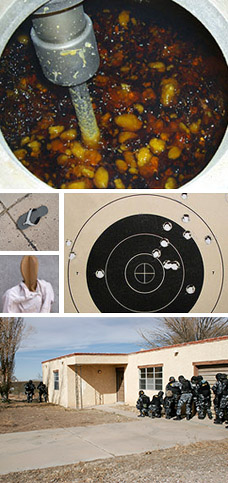
on, os certifico que
con la ayuda de Dio
s noso tros entraremos poderosamente contra voso
tros, y os haremos
guerra por todas las partes y maneras que pudieramos, y os sujetaremos al yugo y obediencia de la Iglesia y de Sus Majestades, y tomaremos vuestras personas y de vuestras mujeres e hijos y los haremos esclavos, y como tales los venderemos y dispondremos de ellos como Sus Majestades mandaren, y os tomare
mos vuestros bienes, y os hare
mos todos los males y danos que pudieramos, como a vasallos que no obedecen ni quieren recibir a su señor y le resisten y contradicen; y protestamos que las muertes y danos que de ello se siguiesen sea a vuestra culpa y no de Sus Majestades, ni nuestra, ni de éstos caballeros que con nosotros vienen.
Y de como lo decimos y requerimo
Let us convert your media to DVD or compress it for the web or PowerPoint. That's right; we can take your large, slow movie files, and compress them to be used on the web or in a PowerPoint presentation with clarity and resolution.
s pedimos al presente escr
ibano que nos lo de por testimonio signado, y a los presente rogamos que de ello sean testigos. Requerimiento De parte del rey, don Fernando, y de su hija, doña Juana, reina de Castilla y León, domadores de pueblos bárbaros, nosotros, sus siervos, os notificamos y os hacemos saber, como mejor podemos, que
Dios nuestr
o Señor, uno y eterno, creó el cielo y la tierra, y un hombre y una mujer, de quien nos y vosotros y todos los hombres del mundo fueron y son descendientes y procreados, y todos los que después de nosotros vinieran. Mas por la muchedumbre de la
generación
que de éstos ha salido desde hace cinco mil y hasta más años que el mundo fue creado, fue necesario que los unos hombres fuesen por una parte y otros por otra, y se dividiesen por muchos reinos y provincias, que en una sola no se podían sostener y conservar. De todas estas gentes Dios nuestro Señor dio cargo a uno, que fue llamado san Pedro, para que de todos los hombres del mundo fuese señor y superior a quien todos obedeciesen, y fue cabeza de todo él linaje humano, d
ondequiera que los homb
res viniesen en cualquier ley, secta o creencia; y diole todo el mundo por su Reino y jurisdiccion, y como quiera que él mandó poner su silla en Roma, como en
lugar mas aparejado para regir el mundo, y juzgar y gobernar a todas las gentes, cristianos, moros, judios, gentiles o de cu
alquier o Whether you need one page or many pages, the Edit Studio is your one-stop print shop. Color or black and white, 8.5" x 11" or 11" x 17", the Edit Studio has the printers your projects need. Our oversized plotter printer can make full color prints up to 40" wide by 60" long - great for large posters, banners or whatever your department's graphics needs are. We make photo prints too, up to 8" x 10".
tra secta o creencia que fueren. A este llamaron Papa, porque quiere decir admirable, padre mayor y gobernador de todos los hombres. A éste san Pedro obede
cieron y tomaron por senor, rey y superior del universo los que en aquel tiempo vivían, y así mismo han tenido a todos los otros que después de él fueron elegidos al pontificado, y así se ha continuado hasta ahora, y continuara hasta que el mundo se acabe. Uno de los Pontifices pasados que en lugar de éste sucedió en aquella dignidad y silla que he dicho, como señor del mundo hizo donación de estas islas y tierra firme del ma
So why wait?r Oceano a los dichos Rey y Reina y sus sucesores en éstos reinos, co
n todo lo que en ella hay, segun se co

